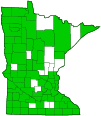prairie groundsel
(Packera plattensis)
Conservation • Wetland • Description • Habitat • Ecology • Use • Distribution • Taxonomy
Description |
Prairie groundsel is a highly variable, 4″ to 24″ tall, erect, short-lived perennial or occasionally biennial forb. It is abundant and widespread. It rises on usually 1 stem, occasionally 2 or 3 clustered stems, from a usually stout, erect to horizontal rootstock. Older plants form a small underground caudex. It often forms dense colonies. It sometimes reproduces vegetatively by well-developed, above-ground, creeping stems (stolons). The stems are erect, light green, hollow, and cylinder-shaped with shallow ridges. When young they are more or less evenly covered with dense, felty hairs. Above the base they become sparsely hairy when the plant is in flower except for patches of cobwebby hairs in the leaf axils and inflorescence branch nodes. Basal leaves are highly variable. They may be narrowly elliptic to egg-shaped, inversely lance-shaped, almost lyre-shaped, or, rarely, almost circular. They are on leaf stalks up to 4″ long. They are ¾″ to 2¾″ long, ⅜″ to 1¼″ wide, tapered, rounded, or nearly squared at the base, and rounded or bluntly pointed at the tip. They are usually unlobed, but sometimes have a few narrow, irregular lobes near the base. When young, the upper and lower surfaces are evenly covered with dense, felty hairs. At flowering time the upper surface is nearly hairless, the lower surface is has tufts of woolly hairs especially along the midrib. The margins may be sharply toothed or have rounded teeth. Whatever their shape, basal leaves are persistent, usually present when the plant is in flower. Stem leaves are alternate. Lower stem leaves are stalked and similar to the basal leaves. They are either somewhat lyre-shaped, with a large terminal lobe and smaller, narrow, lateral lobes, or cut to the midrib (pinnatifid). The terminal lobe is egg-shaped and longer than wide. As they ascend the stem the leaves become gradually smaller, deeply pinnatifid, and stalkless or nearly stalkless. When young, the upper and lower surfaces are evenly covered with dense, felty hairs. At flowering time the upper surface is nearly hairless, the lower surface is sparsely hairy. The margins are sharply toothed. The inflorescence is a dense or loose, branched cluster of 6 to 20 or more flower heads at the end of the stem. The outer heads are on longer flower stalks than the inner heads, resulting in a flat topped cluster. The flower stalks are sparsely to densely hairy and have a small, leaf-like bract at the base. The flower heads are ½″ to 1″ wide. There are 13 or 21 green bracts united for most of their length into a cylinder-shaped flower cup (calyx), and separated at the tip into pointed, thin, membranous lobes. The calyx is usually hairless, sometimes with cobwebby hairs near the base. There are 8 to 10 yellow ray florets and 60 to 70 yellow or golden yellow disk florets. The flowers have a mild fragrance. The fruit is an achene. |
Height |
4″ to 24″ |
Flower Color |
Yellow ray florets, yellow or golden yellow disk florets |
Similar Species |
Balsam groundsel (Packera paupercula) rarely produces stolons. The inflorescences have fewer than 20 flower heads. The flower heads have 8 or 13 ray florets. |
Habitat |
Dry. Prairies, meadows, open woods, cliffs, railroads. Full sun. |
Ecology |
Flowering |
June to August |
Pests and Diseases |
|
Use |
|
Distribution |
||
|
Sources Biodiversity occurrence data published by: Minnesota Biodiversity Atlas (accessed through the Minnesota Biodiversity Atlas Portal, bellatlas.umn.edu, 6/8/2025). |
|
| 6/8/2025 | ||
Nativity |
||
Native |
||
Occurrence |
||
Common |
||
Taxonomy |
|
Kingdom |
|
Division |
Tracheophyta (Vascular Plants) |
Subdivision |
Spermatophytina (Seed Plants) |
Class |
|
Order |
Asterales (Sunflowers, Bellflowers, Fanflowers, and Allies) |
Family |
Asteraceae (Sunflowers, Daisies, Asters, and Allies) |
Subfamily |
Asteroideae |
Supertribe |
Senecionodae |
Tribe |
Senecioneae (groundsels and allies) |
Subtribe |
Senecioninae |
Genus |
Packera (American groundsels and ragworts) |
The 64 species in the genus Packera were formerly included in the genus Senecio. |
|
Subordinate Taxa |
|
|
|
Synonyms |
|
Senecio plattensis Senecio pseudotomentosus |
|
Common Names |
|
Platte groundsel Platte ragwort prairie groundsel prairie ragwort |
|
Glossary
Axil
The upper angle where the leaf stalk meets the stem.
Bractlet
A small, often secondary bract within an inflorescence; a bract that is borne on a petiole instead of subtending it.
Calyx
The group of outer floral leaves (sepals) below the petals, occasionally forming a tube.
Caudex
A short, thickened, woody, persistent enlargement of the stem, at or below ground level, used for water storage.
Node
The small swelling of the stem from which one or more leaves, branches, or buds originate.
Pinnatifid
Deeply cut, more than half way to the midrib but not to the midrib, into lobes that are spaced out along the midrib; the lobes do not form separate leaflets.
Stolon
An above-ground, creeping stem that grows along the ground and produces roots and sometimes new plants at its nodes. A runner.
Visitor Photos |
||
Share your photo of this plant. |
||
This button not working for you? |
||
Dan W. Andree |
||
 |
 |
|
Small plants with purplish under the leaf... colors. They looked purplish on the under side and green above. They were in the previously burned area at Frenchman’s Bluff SNA. They caught my eye due to that purplish color. Just thought I’d send this. Could be a prairie plant that turns all green when it gets bigger but I really don’t know. |
||
Plant with purplish under leaves... I think this is an older plant of the same ones that when small or just sprouting had those purplish leaf color. It was at Frenchman's Bluff SNA. |
||
MinnesotaSeasons.com Photos |
||
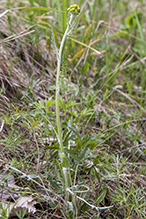 |
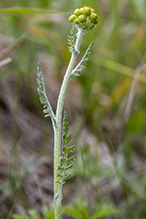 |
|
Plant |
Plant |
|
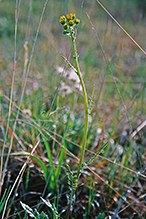 |
 |
|
Plant |
Plant |
|
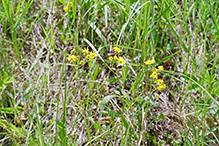 |
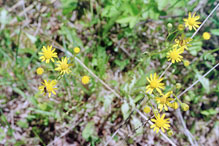 |
|
Plant |
Inflorescence |
|
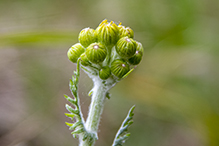 |
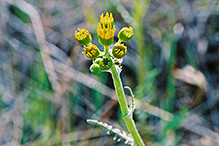 |
|
Inflorescence |
||
|
||
|
||
Inflorescence |
|
|
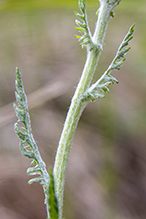 |
 |
|
Upper stem leaf |
Middle stem leaf |
|
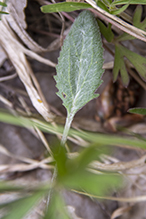 |
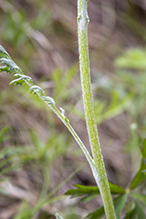 |
|
Lower stem leaf |
Stem |

Slideshows |
|

Visitor Videos |
||
Share your video of this plant. |
||
This button not working for you? |
||
|
Other Videos |
||
|

Visitor Sightings |
||
Report a sighting of this plant. |
||
This button not working for you? |
||
Dan W. Andree |
Location: Frenchman’s Bluff SNA I think this is an older plant of the same ones that when small or just sprouting had those purplish leaf color. It was at Frenchman's Bluff SNA. |
 |
Dan W. Andree |
Location: Frenchman’s Bluff SNA Small plants with purplish under the leaf...colors. They looked purplish on the under side and green above. They were in the previously burned area at Frenchman’s Bluff SNA. They caught my eye due to that purplish color. Just thought I’d send this. Could be a prairie plant that turns all green when it gets bigger but I really don’t know. |
 |
MinnesotaSeasons.com Sightings |
||

|
Created: 5/16/2005 Last Updated: © MinnesotaSeasons.com. All rights reserved. |
